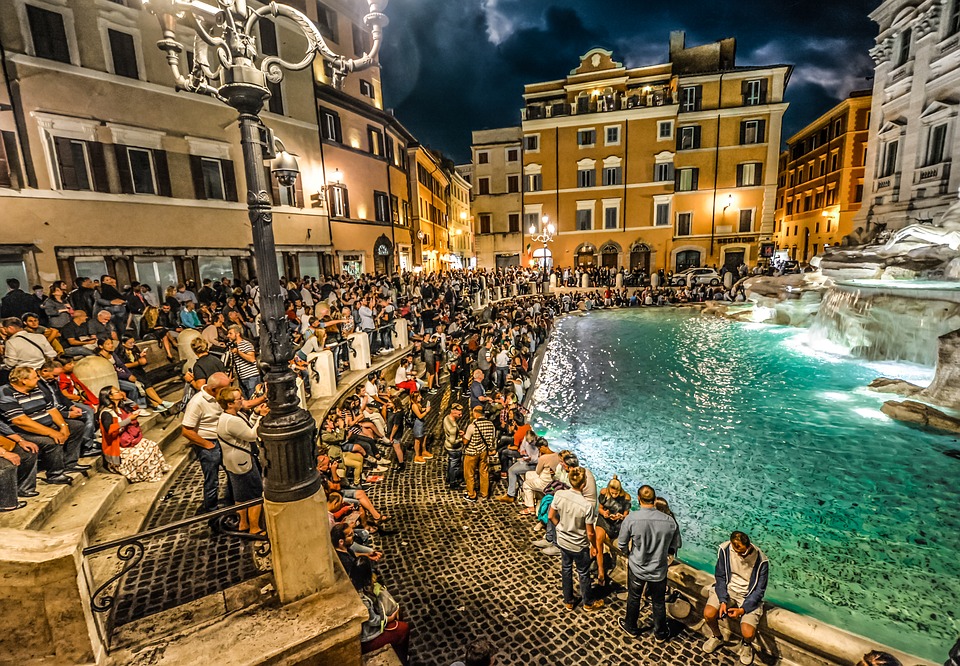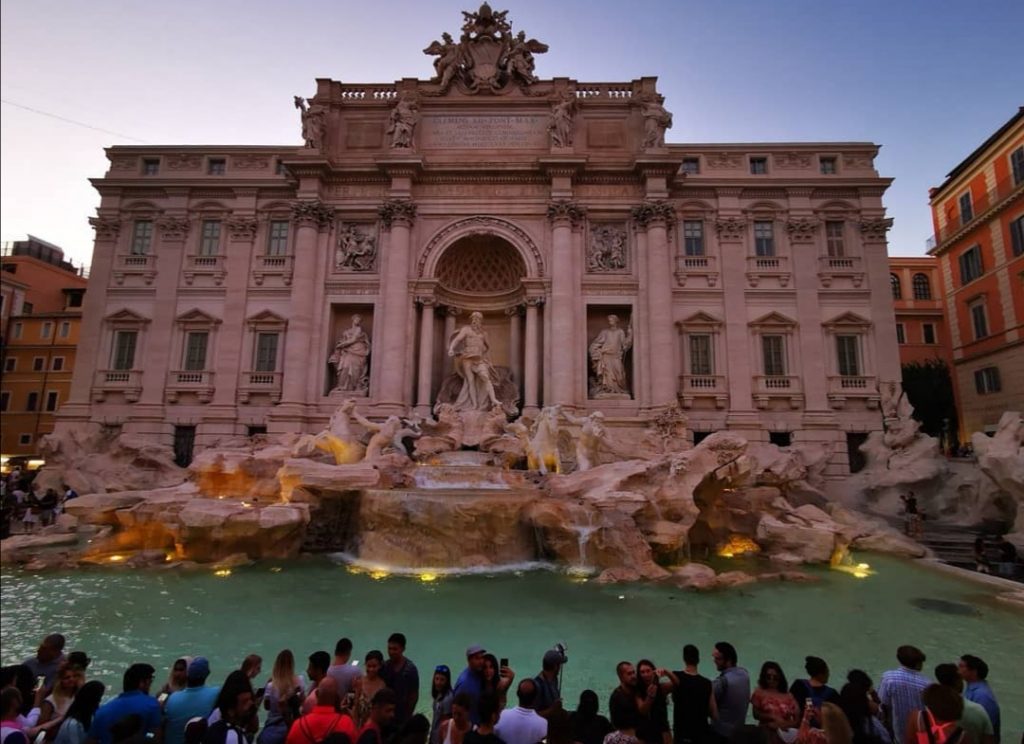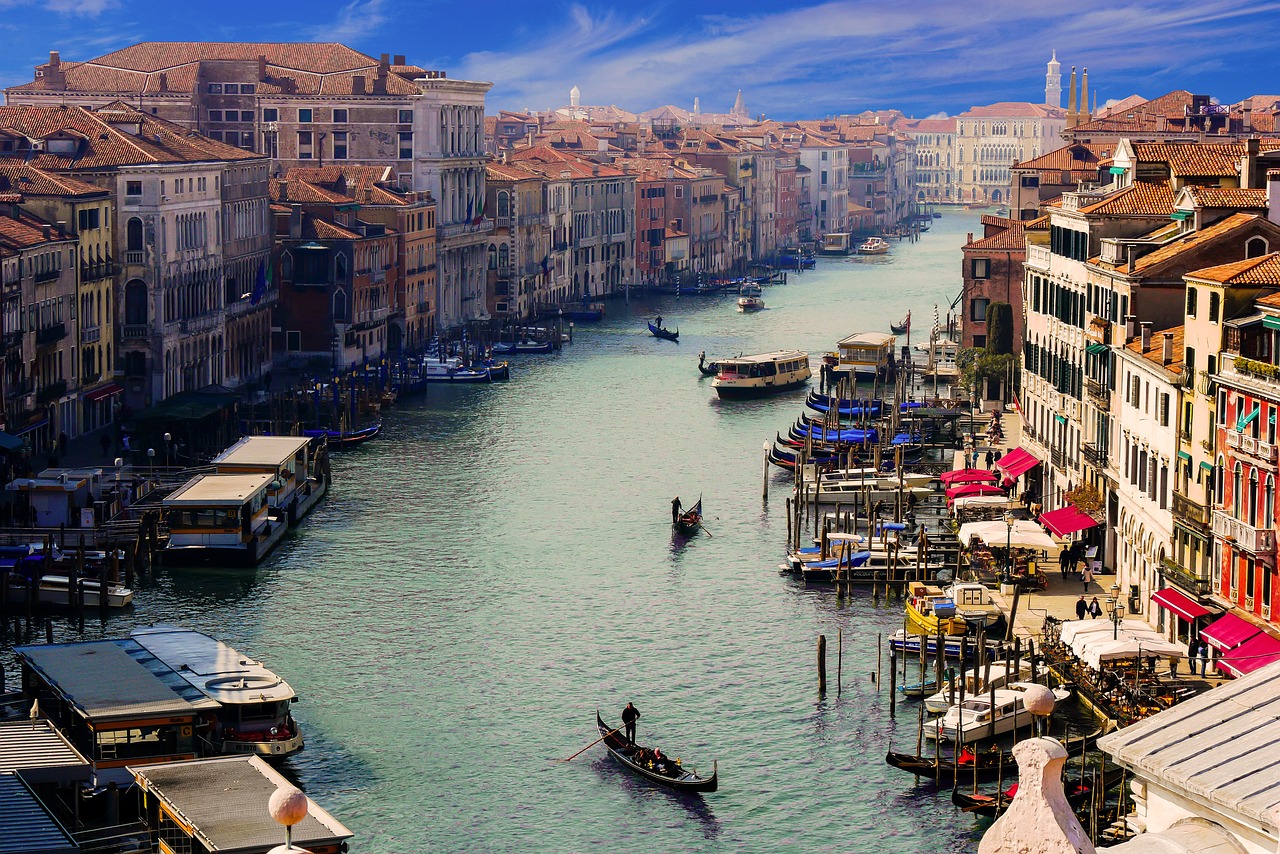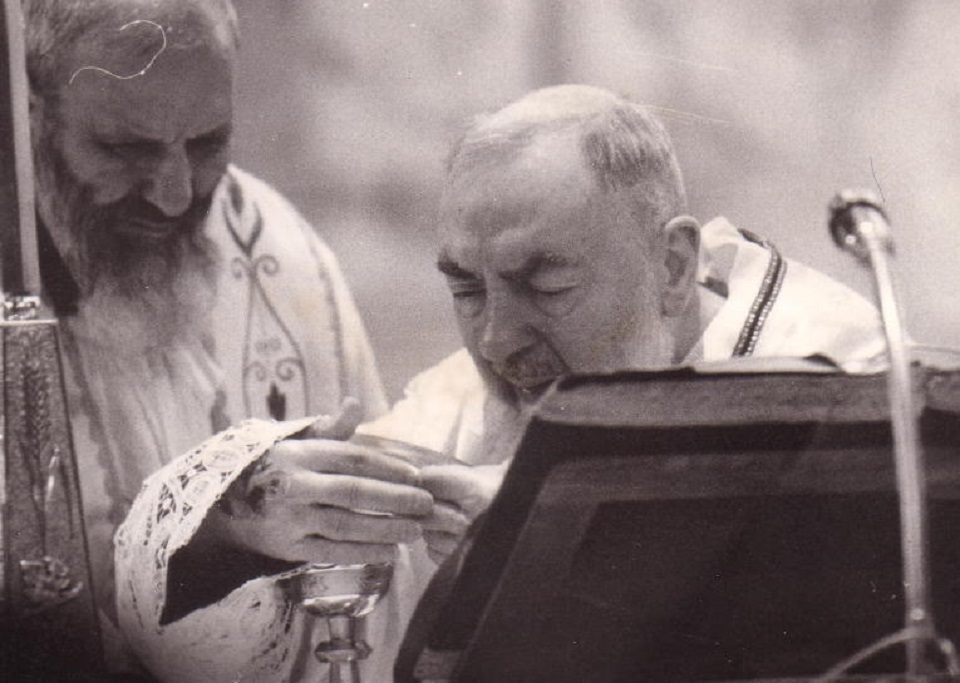If you visit Rome, you cannot miss a stop at one of the best known fountains in the world. Both because it has been the protagonist of famous films, and because it is a masterpiece, a triumph, of Baroque art. We are talking about the Trevi Fountain, a majestic rococo work. Imposing for its statues but also for the water and the colors it releases. The Trevi Fountain is also known for the legend of the coin toss.

The Trevi Fountain, the history of the work
The fountain takes its name from Trevi, which indicates the meeting point of three different ways. It is located on the facade of Palazzo Poli. The construction was commissioned by Pope Urban VII who assigned the task to Bernini, around 1640. But the costs for carrying out the monumental work were very high. So much so that times got longer and the works were not started. Clement XII resumed the idea of building the fountain. In 1730 he was responsible for a competition among the best artists of the time. The Roman architect Nicola Salvi won it.

Two years later, work began on this work which encompasses architecture, sculpture and natural elements. Movement is the keyword as in the spirit of the Baroque. The work was completed by the sculptor Pietro Bracci under the tutelage of Clement XIII and the direction of Giuseppe Pannini. It was inaugurated on 22 May 1762. It has 20 meters wide and a 26m high. The fountain is also a tribute to the history of the aqueduct.
What the statues of the Trevi Fountain represent
A careful and curious eye cannot fail to dwell on the details of this work. Because if on the one hand you are dazzled by the color of the stone, by the play of lights and water, you cannot help but know them. First of all, the figure of Ocean stands out on a cart pulled by sea horses and tritons. The two horses are different: one is docile and calm, the other is rough and moving. They symbolize the different temperament of the sea.

On the sides of the god there are statues inside two niches. They represent the personification of Abundance, which pours water from its urn and that of Health, holding a cup from which a snake quenches its thirst. And then Agrippa who approves the project and on the right the virgin girl, who points out the source to thirsty soldiers. Finally the Clement XII’s marble coat of arms and the statues representing the four seasons.
The legend of the coin toss
The Trevi Fountain is stormed, in the true sense of the word, by thousands of tourists every day. This is why the citizens recommend seeing it at the first light of dawn or late at night, when there are fewer people. Everyone reaches for the traditional coin toss. It is said that whoever throws a coin, strictly with his back to the fountain, will surely return to Rome. And then there is a more romantic legend. If you throw two coins you will find love; if you throw three you will get married soon. In short, believing or not the legend, for sure anyone who visits it makes this talismatic gesture. So much so that periodically when the coins are collected there are thousands of them. A portion is then donated to charity and the rest of the money used to maintain the site.
Other legends and films that made it famous
There is also another story that many know. That of a barber who had his business on the square. Annoyed by the noises, he complained constantly. So much so that the sculptor Salvi decided to make a large stone vase on the eastern part of the fountain so as to make it invisible to the barber. And this vase still exists and it seems that if you stand behind it, you don’t really see it.

There are also many films linked to the Trevi Fountain in the collective memory. Like “Totò truffa 62”, the romantic comedy “Tre soldi nella fontana”, “La dolce vita” by Fellini, and the famous scene with Anita Ekberg who dives while she bewitches Marcello Mastroianni inviting him to join her. But woe to dive into the great fountain. It is absolutely forbidden.
Restoration interventions and demonstration actions
The Trevi Fountain has recently been restored. Fendi want it, in January 2013. Seventeen months of work that allowed to recover many parts deteriorated by time. And then Fendi, after the restoration was completed, celebrated 90 years since the opening of his atelier in the historic center of Rome with a walkway over the water. There are also many demonstration actions. Among these, that of Graziano Cecchini in 2017 which colored it red, or that of Adrián Pino Olivera who entered the fountain naked.
Featured image by Rosy Caporale







